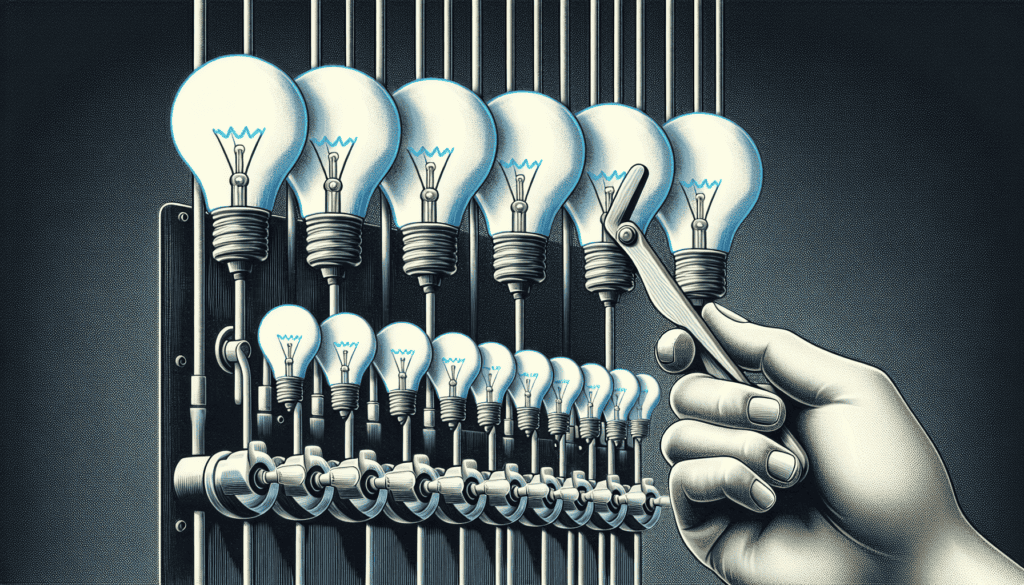Porn addiction has become a growing concern in today’s digital age, affecting individuals across various demographics. Understanding the causes of porn addiction is crucial for effective prevention and treatment. By identifying what causes porn addiction, we can develop targeted strategies to combat this issue and support those struggling with addiction.
A 2019 study published in the Journal of Behavioral Addictions reported that approximately 3-6% of the adult population in the United States struggles with porn addiction.
Additionally, a 2021 survey by the International Journal of Environmental Research and Public Health found that internet pornography use increased by 40% during the COVID-19 pandemic (source), highlighting the urgency of addressing this issue.
Read also: What Causes Porn Addiction? The Facts You Need Now
By examining what causes a porn addiction, mental health issues, emotional triggers, accessibility, and societal attitudes, we can gain a holistic view of the problem and address it more effectively. Understanding the cause of porn addiction helps in creating a comprehensive approach to combat this growing concern.
Psychological Causes
Mental Health Issues
Mental health issues significantly contribute to porn addiction causes. Individuals struggling with anxiety, depression, or other psychological disorders often turn to pornography as a coping mechanism. This behavior creates a temporary escape from their emotional pain but can lead to a destructive cycle of dependency.
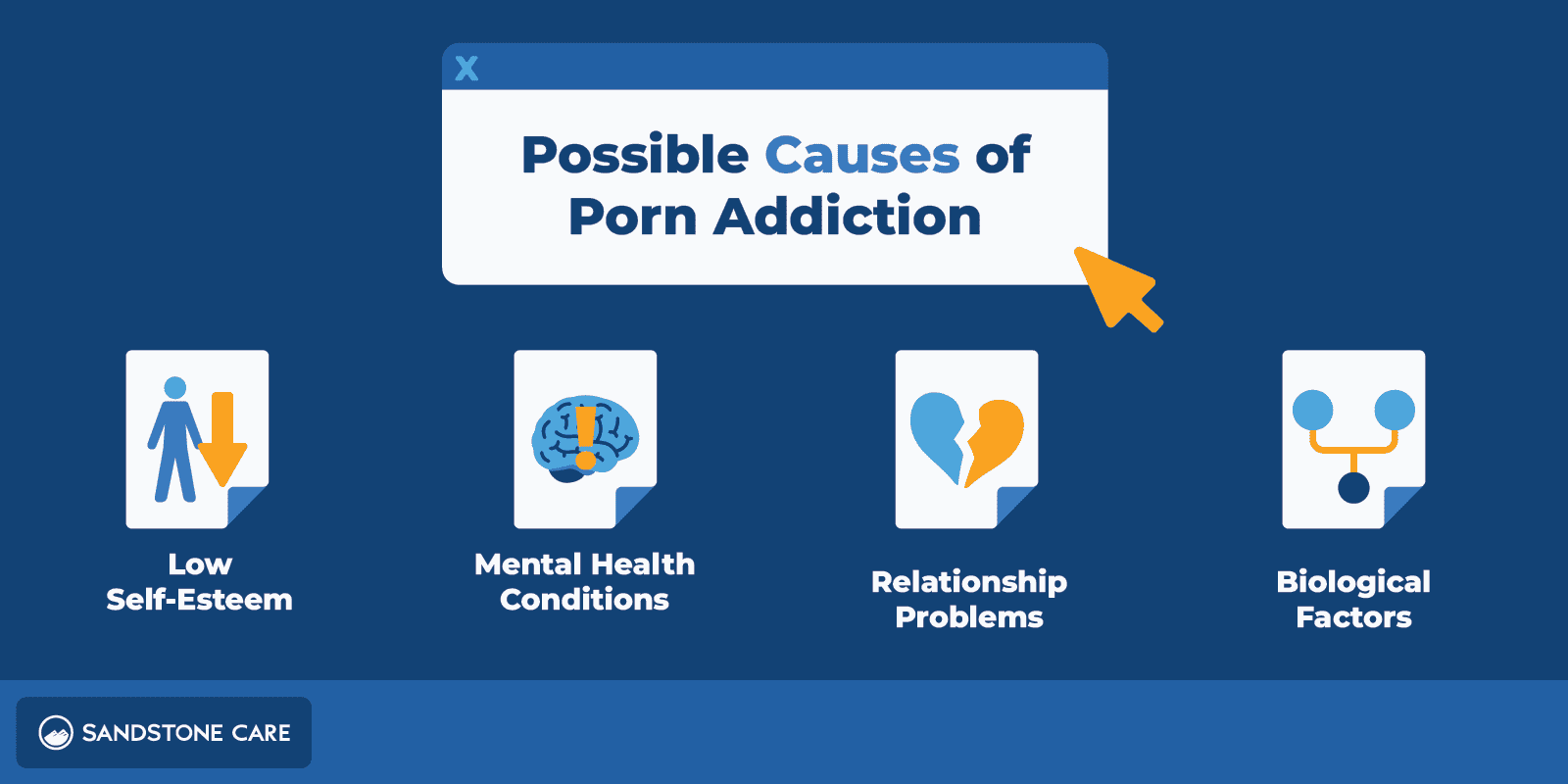
Credit: Sandstone Care
Several studies highlight the connection between mental health and porn addiction. For instance, research shows that people with high levels of stress or low self-esteem are more likely to develop addictive behaviors. This correlation underscores the need for mental health professionals to address these underlying issues during treatment.
Anxiety and Porn Addiction
People with anxiety might use pornography to distract themselves from constant worry, providing a brief respite. Similarly, those suffering from depression might seek out pornographic content to experience temporary pleasure or escape from feelings of hopelessness. These actions, while offering short-term relief, often worsen the individual’s overall mental health, leading to a deeper entanglement with the addiction.
Trauma and Porn Addiction
Individuals with unresolved trauma or those experiencing significant life stressors may find themselves more susceptible to porn addiction. The addiction can become a way to numb the pain associated with their mental health struggles, further entrenching them in a harmful cycle. Recognizing and treating these mental health issues as part of a comprehensive addiction recovery plan is crucial for long-term success.
Emotional Triggers
Emotional triggers also play a crucial role in what causes porn addiction. Feelings of loneliness, rejection, or boredom can drive individuals to seek comfort in pornography. These emotional states often exacerbate the addiction, making it difficult for individuals to break free.
Understanding these emotional triggers for porn addiction helps in developing targeted interventions. Therapists can work with individuals to identify these triggers and develop healthier coping mechanisms. By addressing the emotional roots of the addiction, treatment becomes more effective and sustainable.
Loneliness and Porn Addiction
For instance, someone who feels lonely might turn to pornography to fill the void of social interaction, finding solace in the illusion of connection. This temporary solution, however, does not address the underlying loneliness and can create a dependency on pornographic content for emotional fulfillment.
Rejection and Porn Addiction
Rejection, whether from a romantic partner, friend, or even a job opportunity, can also lead individuals to pornography as a way to manage emotional pain. The perceived acceptance and validation found in pornographic content can momentarily ease feelings of inadequacy or worthlessness, making it a compelling but ultimately harmful coping mechanism.
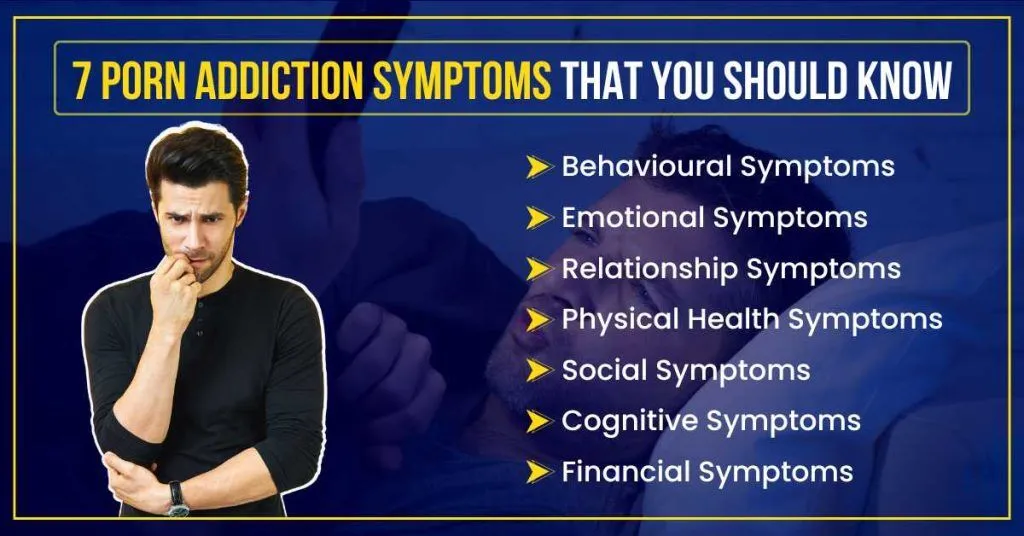
Credit: psychiatristjaipur.com
Boredom and Porn Addiction
Boredom is another powerful emotional trigger. In moments of inactivity or lack of stimulation, individuals might resort to pornography to pass the time or add excitement to their day. This habit can quickly escalate as the brain becomes accustomed to the high levels of stimulation provided by pornographic material, leading to increased consumption and dependency.
By recognizing and addressing these emotional triggers, individuals can learn to develop healthier ways of managing their emotions. Techniques such as mindfulness, cognitive-behavioral therapy (CBT), and building strong social support networks can significantly reduce reliance on pornography as an emotional crutch.
Social and Environmental Factors
Accessibility and Availability
Easy access to pornography significantly contributes to addiction. The internet has made pornography readily available, allowing individuals to access explicit content anonymously and conveniently. This high level of accessibility increases the likelihood of developing addictive behaviors, particularly among young people who are more tech-savvy.
Studies reveal that the average age of first exposure to online pornography is around 11 years old. A 2016 study published in the Journal of Adolescent Health found that 93% of boys and 62% of girls are exposed to online pornography during their adolescence, with many encountering explicit material at a young age (source).
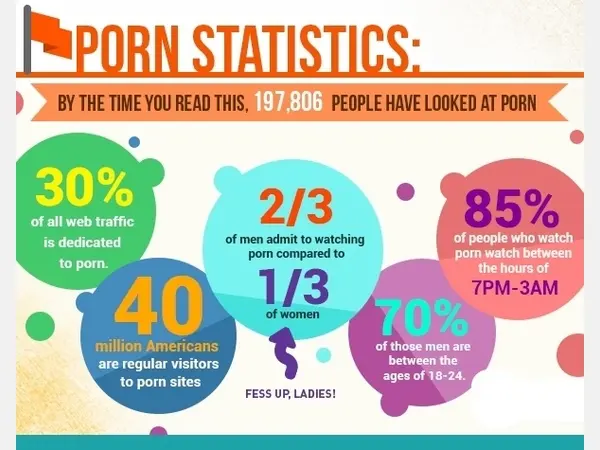
Credit: Patch
This early exposure can shape their attitudes and behaviors toward sex, potentially leading to addiction. With smartphones and other digital devices, individuals can access pornographic material at any time, increasing the risk of addiction. Understanding the impact of the accessibility of porn is crucial for developing effective prevention strategies.
Impact of Technology on Porn Addiction
Technology plays a critical role in the availability of pornography. High-speed internet, social media platforms, and adult websites contribute to the widespread dissemination of explicit content. The continuous evolution of technology makes it easier for individuals to engage in addictive behaviors without immediate consequences.
Addressing the role of technology involves implementing measures such as parental controls, content filters, and educational programs to mitigate the risks associated with easy access to pornography. By recognizing the influence of technology, society can better manage the factors contributing to porn addiction.
Cultural and Societal Attitudes
Cultural and societal attitudes towards pornography significantly impact addiction rates. In societies where pornography is normalized or even glamorized, individuals are more likely to view it as a harmless activity. This normalization can lead to increased consumption and, ultimately, addiction.
Different cultures have varying perspectives on pornography, affecting how individuals within those cultures interact with explicit content. In some societies, strict regulations and social stigmas around pornography may reduce exposure, while in others, more liberal attitudes may increase the prevalence of porn addiction.
Influence of Social Norms on Porn Addiction
Social norms play a pivotal role in shaping behaviors related to pornography. When society views porn consumption as acceptable or even desirable, individuals feel less inhibited about engaging in such activities. This societal acceptance can create an environment where addiction thrives.
Efforts to change societal attitudes towards pornography should focus on education and awareness campaigns that highlight the potential harms of excessive consumption. By shifting social norms, communities can reduce the risk factors associated with porn addiction.
Biological Influences
Genetic Predispositions
Genetic factors play a significant role in porn addiction causes. Individuals with a family history of addiction may have a higher risk of developing similar behaviors, including porn addiction. Studies indicate that genetic predispositions can influence how the brain responds to addictive stimuli, making some people more vulnerable to addiction.
For instance, research published in the American Journal of Psychiatry found that genetic variations in dopamine receptors could affect an individual’s susceptibility to addiction. The study can be accessed here.
These genetic differences can lead to a higher likelihood of engaging in addictive behaviors, including excessive consumption of pornography. Understanding the genetic factors in addiction helps in identifying individuals at risk and developing personalized treatment plans.
Neurological Factors
Neurological factors also contribute significantly to porn addiction causes. The brain’s reward system plays a crucial role in addiction, and frequent exposure to pornography can alter brain chemistry. Pornography consumption releases dopamine, a neurotransmitter associated with pleasure and reward, which reinforces the behavior and creates a cycle of addiction.
Studies show that repeated exposure to pornographic material can lead to changes in brain structure and function, similar to those observed in substance addiction. This neurological impact makes it challenging for individuals to control their consumption, as their brains become wired to seek the intense stimulation provided by pornography. Addressing these neurological factors in porn addiction is essential for effective treatment and recovery.
Impact of Brain Chemistry on Addiction
The brain’s reward circuitry becomes highly sensitized through repeated exposure to pornography. This sensitization leads to cravings and compulsive behaviors, making it difficult for individuals to stop consuming pornographic content. Understanding the relationship between the brain and porn addiction is crucial for developing interventions that target these neurological pathways.
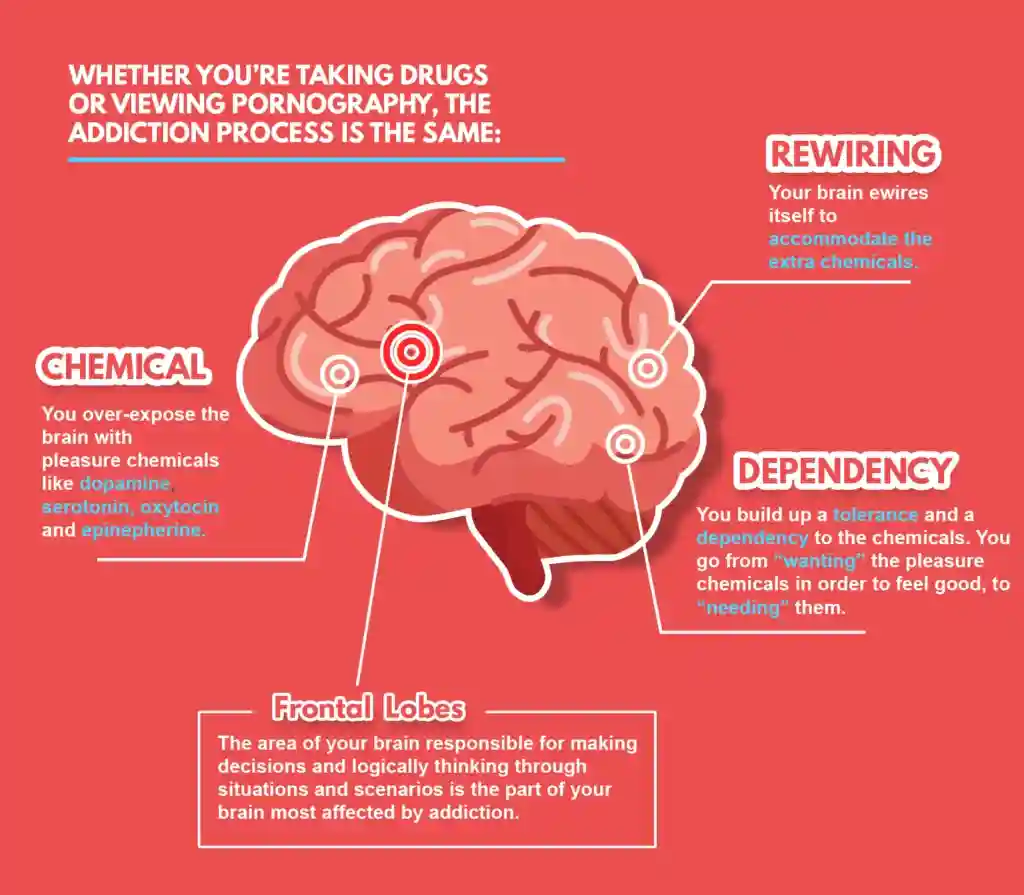
Credit: Canopy
Therapies such as cognitive-behavioral therapy (CBT) and mindfulness can help rewire the brain and reduce the compulsive nature of the addiction. By focusing on the neurological aspects of porn addiction, treatment can become more effective and tailored to the individual’s needs.
Personal and Relationship Factors
Interpersonal Relationships
Interpersonal relationships significantly impact relationships and porn addiction. Individuals struggling with porn addiction often experience strained relationships with partners, family members, and friends. The secrecy and guilt associated with addiction can lead to emotional distance, mistrust, and conflicts within relationships.
Research indicates that individuals addicted to pornography may neglect their partners, leading to dissatisfaction and decreased intimacy. A study published in the Archives of Sexual Behavior found that individuals who frequently use pornography report lower relationship satisfaction and intimacy.
The study revealed that 56% of participants felt that their porn use had negatively affected their intimate relationships. Understanding the dynamics between relationships and porn addiction helps in addressing these issues within a therapeutic context.
Social Factors in Porn Addiction
Social factors also play a crucial role in social factors in porn addiction. Peer influence, societal norms, and cultural attitudes toward pornography can shape an individual’s behavior and perception of porn use. In environments where pornography consumption is normalized or even encouraged, individuals may feel less inhibited about engaging in such activities.
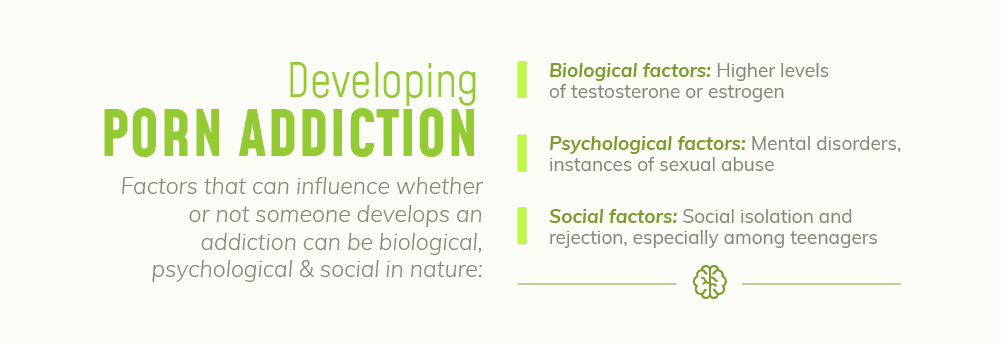
Credit: Northpoint Recovery
Studies show that social isolation and lack of support networks can exacerbate porn addiction. Individuals without strong social connections may turn to pornography as a means of coping with loneliness and stress. Addressing these social factors in porn addiction involves creating supportive environments and fostering healthy social interactions.
Personal History and Trauma
Personal history and trauma significantly contribute to trauma and porn addiction. Individuals with a history of trauma, such as abuse or neglect, are more likely to develop addictive behaviors, including porn addiction. These individuals may use pornography to escape from painful memories and emotions associated with their trauma.
Therapists often find that addressing the underlying trauma is essential for effective addiction treatment. By recognizing the link between trauma and porn addiction, professionals can develop comprehensive treatment plans that address both the addiction and the root causes. This holistic approach can lead to more sustainable recovery outcomes.
The Role of Dopamine in Porn Addiction
Dopamine, a neurotransmitter in the brain, plays a critical role in the development and maintenance of porn addiction. They are often referred to as the “pleasure chemical,” dopamine is released during activities that are perceived as rewarding, such as eating, exercising, and engaging in sexual activities, including watching pornography.
When an individual views pornographic content, their brain releases dopamine, creating feelings of pleasure and satisfaction. This release reinforces the behavior, encouraging the individual to repeat it. Over time, the brain’s reward system becomes conditioned to associate pornography with these pleasurable feelings, leading to increased consumption.

Credit: Sandstone Care
In the context of addiction, repeated exposure to pornography can cause the brain to adapt by reducing its natural dopamine production or becoming less responsive to its effects. This adaptation leads individuals to consume more pornography to achieve the same level of pleasure, creating a cycle of dependency.
The role of dopamine in addiction highlights the importance of addressing both the behavioral and neurological aspects of porn addiction. Effective treatment strategies often include cognitive-behavioral therapy (CBT) and mindfulness practices, which can help rewire the brain’s reward system and reduce the compulsive nature of the addiction.
What Causes Porn Addiction?
Understanding the causes of porn addiction and the various risk factors of porn addiction is crucial for developing effective prevention and treatment strategies.
The psychological causes, including mental health issues and emotional triggers, highlight the need for addressing underlying emotional and psychological conditions. The role of social and environmental factors, such as accessibility and societal attitudes, underscores the importance of creating a supportive and informed community.
The biological influences, including genetic predispositions and neurological factors, reveal how deeply rooted addiction can be in an individual’s physiology.
Personal and relationship factors, such as interpersonal relationships and trauma, further illustrate the complex interplay between an individual’s history and their addiction.
Considering all these aspects, a comprehensive approach to treatment can be developed, ensuring a holistic path to recovery.
If you or someone you know struggles with porn addiction, seeking help is a critical step towards recovery. Professional support can make a significant difference.
Explore resources such as support groups, therapy options, and hotlines dedicated to helping individuals overcome this addiction. For more detailed information and resources, refer to our article on breaking the chains of porn addiction. Read the complete guide here.









